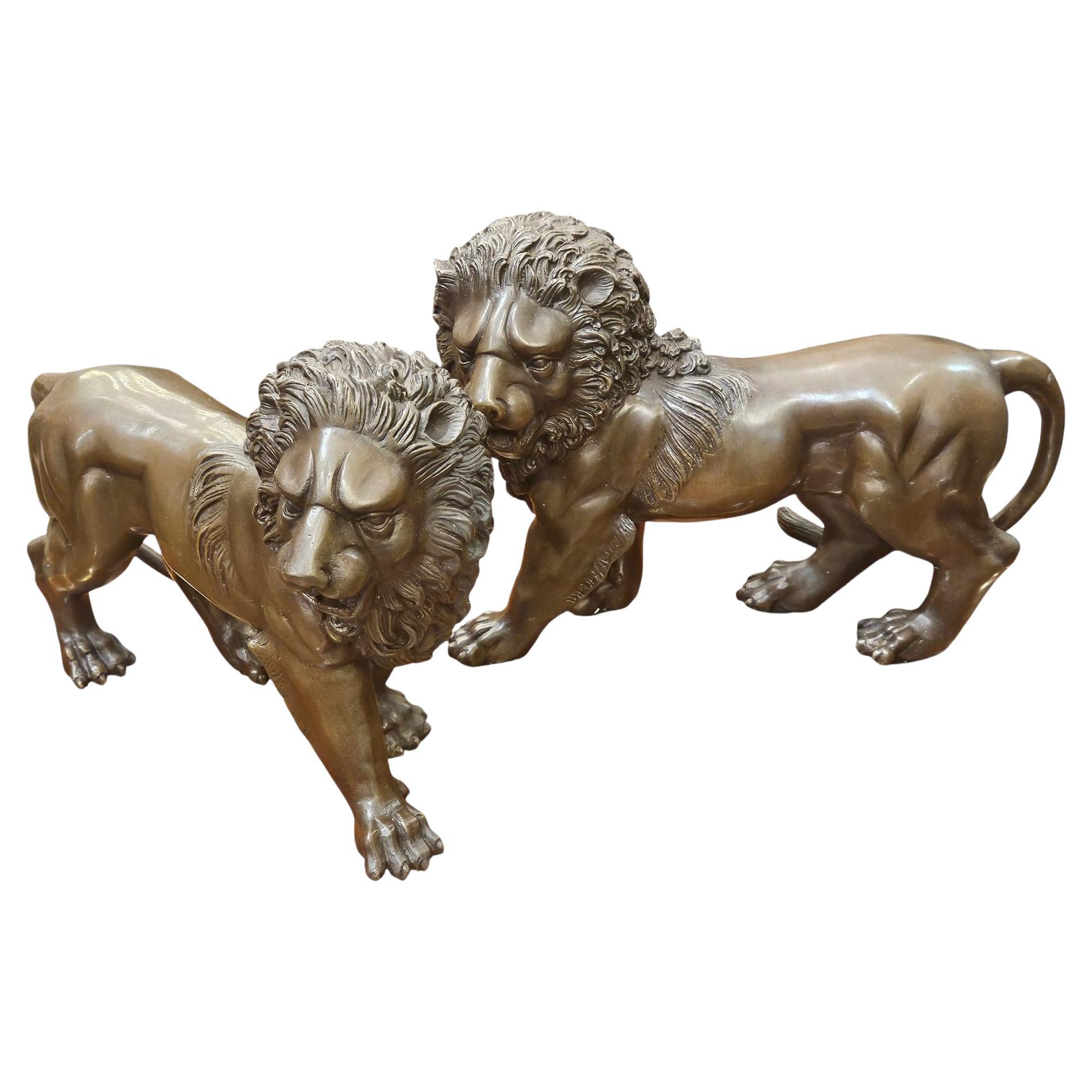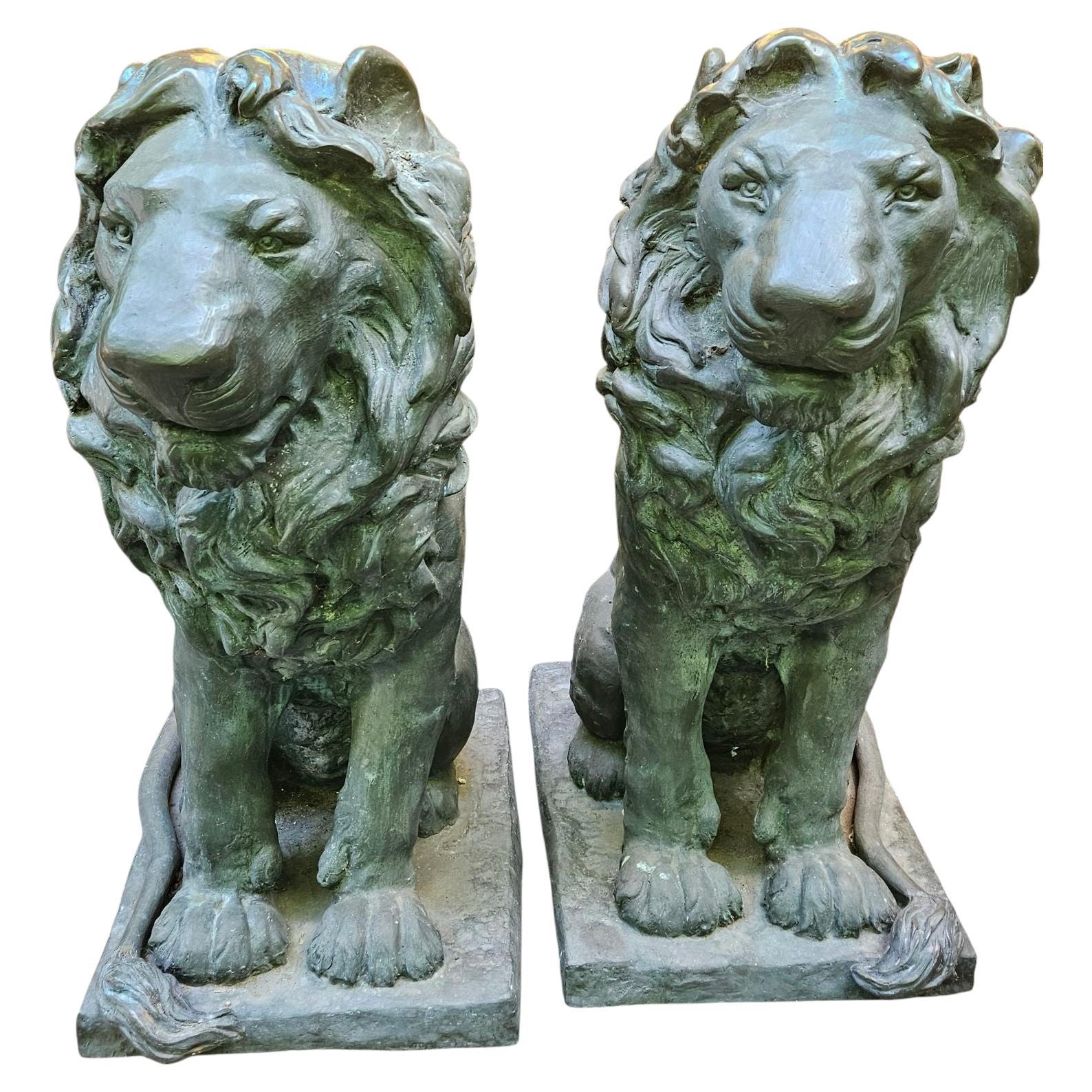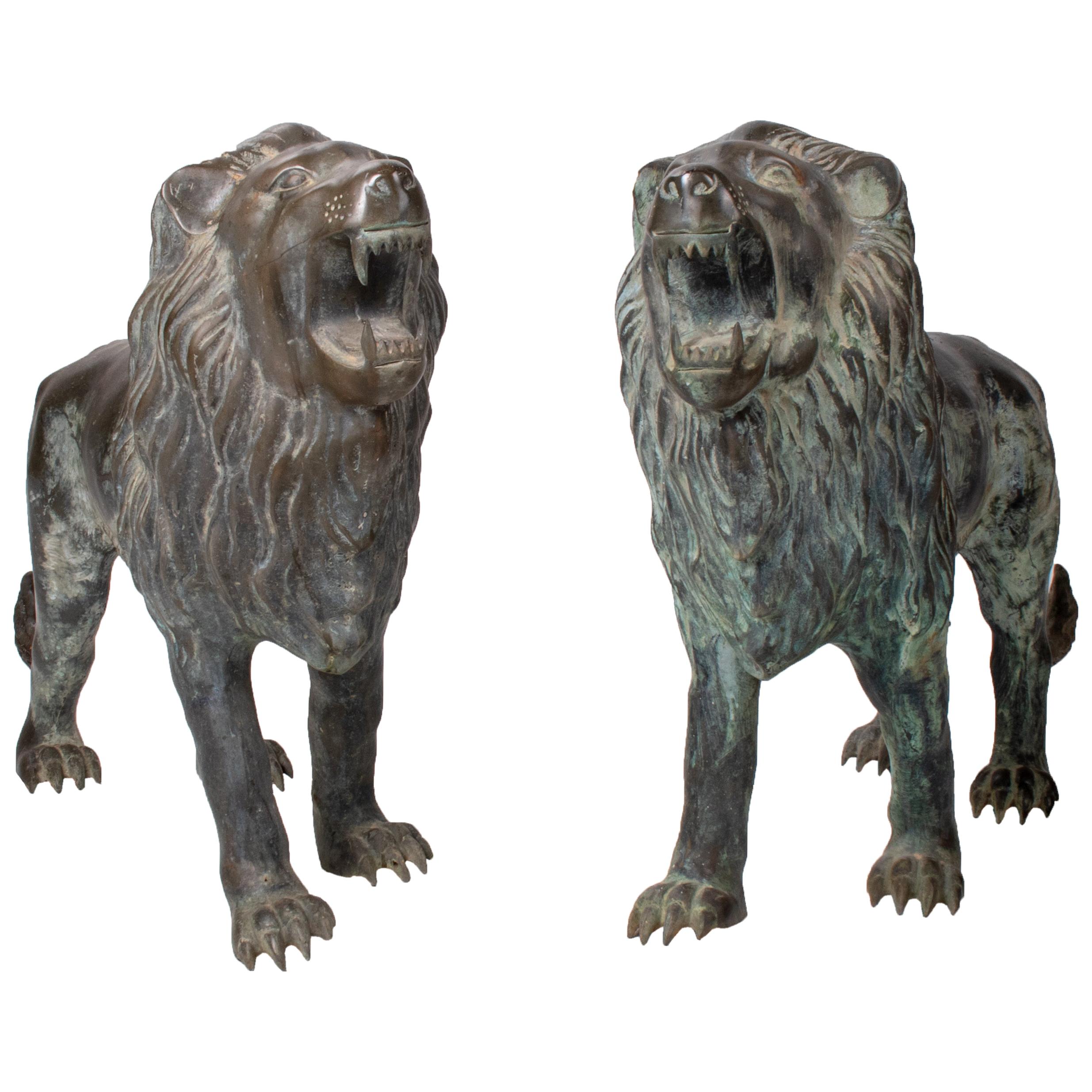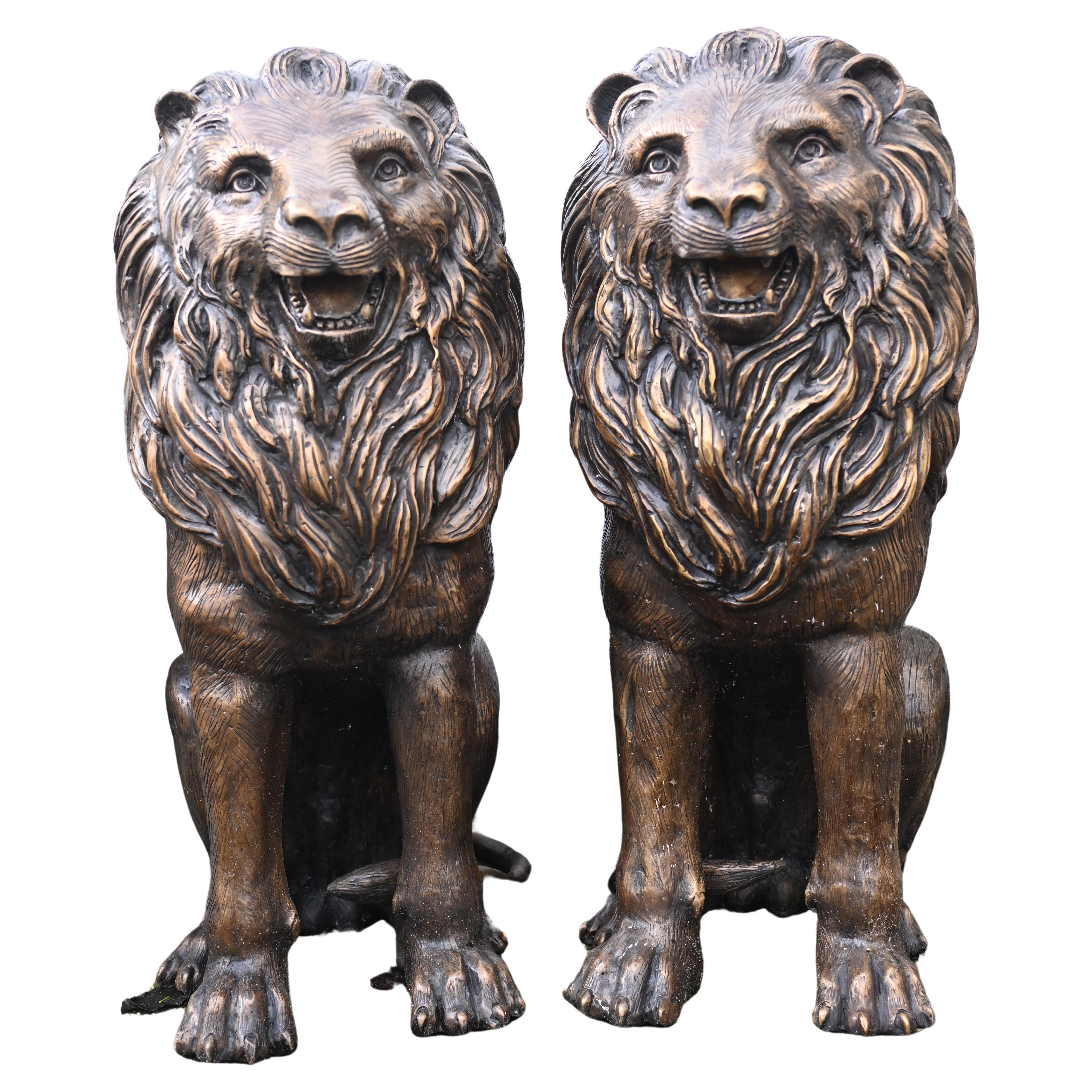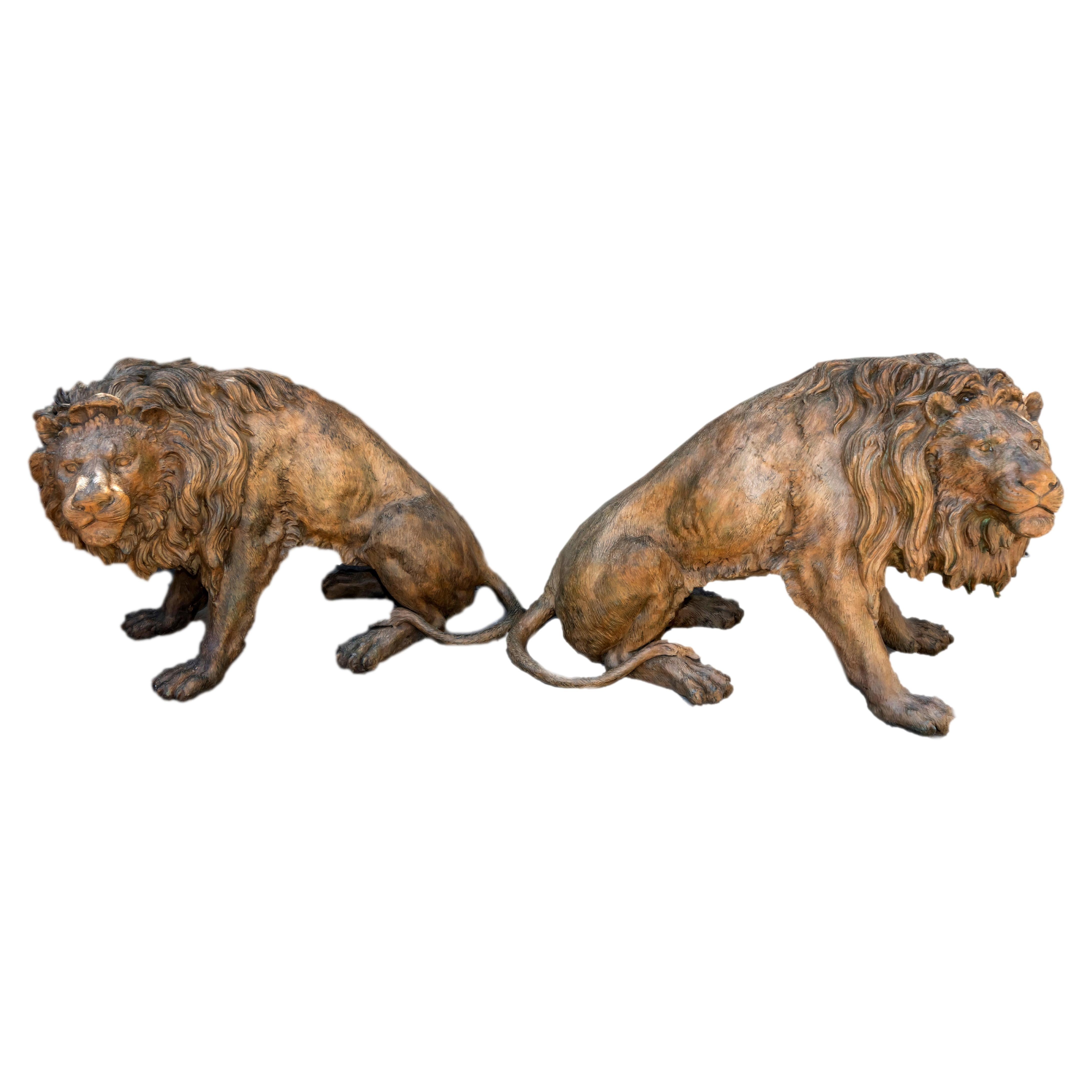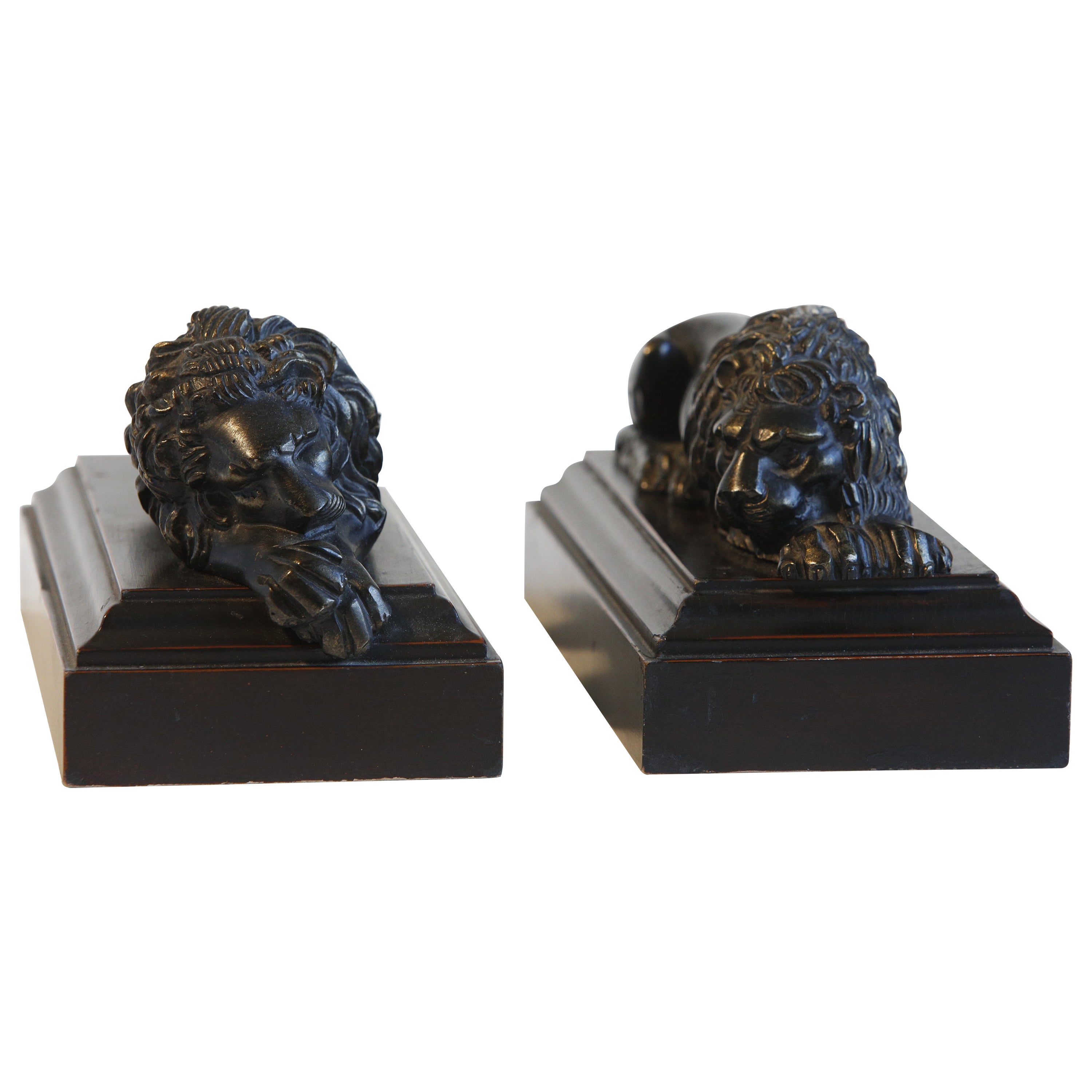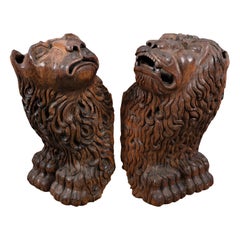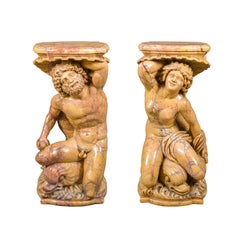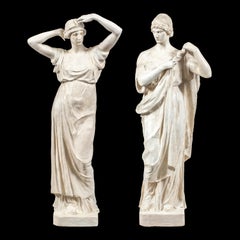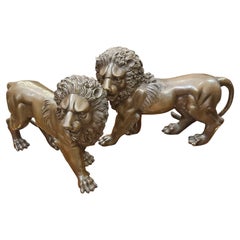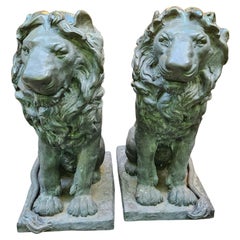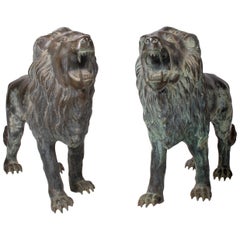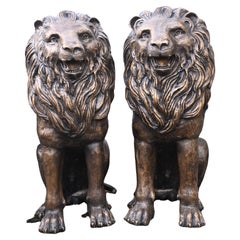Items Similar to Pair of 18th century Renaissance style bronze sculptures - Lions
Want more images or videos?
Request additional images or videos from the seller
1 of 16
UnknownPair of 18th century Renaissance style bronze sculptures - Lionsc.1780
c.1780
$1,778.47
£1,327.26
€1,500
CA$2,483.09
A$2,708.24
CHF 1,423.88
MX$32,760.82
NOK 17,768.30
SEK 16,789.35
DKK 11,422.60
About the Item
Pair of small bronze sculptures - Grotesque lions. Italy, 18th-19th century.
10 x 5 x h 17 cm.
Made entirely of patinated bronze in Renaissance style. Depicting two seated grotesque lion cubs.
- This item is sold with a certificate of authenticity with legal validity.
- Further details on the condition report are available upon request.
*Please keep in mind that this work has not yet obtained the certificate of free export from Italy from the Superintendence of Cultural Heritage. This document certifies that the work is not part of the Italian cultural heritage. Normally the times for issuing certificates are 40 days from the date of the appointment: The new legislation in force from 2021 provides for shorter times at the discretion of the expert commission for declared amounts of less than € 13,500. All costs of this operation are included.
- Creation Year:c.1780
- Dimensions:Height: 6.7 in (17 cm)Width: 3.94 in (10 cm)Depth: 1.97 in (5 cm)
- Medium:
- Movement & Style:
- Period:
- Condition:Please note that any damage or breakage of the antiques in our collection will be restored at the time of sale upon request.
- Gallery Location:Varmo, IT
- Reference Number:1stDibs: LU886316593962
About the Seller
5.0
Platinum Seller
Premium sellers with a 4.7+ rating and 24-hour response times
Established in 2001
1stDibs seller since 2018
214 sales on 1stDibs
Typical response time: <1 hour
- ShippingRetrieving quote...Shipping from: Varmo, Italy
- Return Policy
Authenticity Guarantee
In the unlikely event there’s an issue with an item’s authenticity, contact us within 1 year for a full refund. DetailsMoney-Back Guarantee
If your item is not as described, is damaged in transit, or does not arrive, contact us within 7 days for a full refund. Details24-Hour Cancellation
You have a 24-hour grace period in which to reconsider your purchase, with no questions asked.Vetted Professional Sellers
Our world-class sellers must adhere to strict standards for service and quality, maintaining the integrity of our listings.Price-Match Guarantee
If you find that a seller listed the same item for a lower price elsewhere, we’ll match it.Trusted Global Delivery
Our best-in-class carrier network provides specialized shipping options worldwide, including custom delivery.More From This Seller
View AllBaroque Venetian sculptor - Pair of 17th century lions wood sculptures
Located in Varmo, IT
Pair of bookend sculptures. Venice, 17th century.
15 x 15 x h 29 cm.
Entirely in finely carved wood.
- This item is sold with a certificate of authenticity with legal validity.
-...
Category
Early 17th Century Baroque Figurative Sculptures
Materials
Wood
$2,138 Sale Price
28% Off
Pair of 19th/20th baroque style figure sculptures- Poseidon and Amphitrite
Located in Varmo, IT
Pair of yellow marble vase-holder sculptures - Poseidon and Amphitrite. Italy, 19th-20th century.
44 x 44 x h 90 cm each.
Entirely in yellow marble carved in Baroque style. Depicting Poseidon and Amphitrite holding a horizontal vase...
Category
Late 19th Century Baroque Figurative Sculptures
Materials
Marble
Baroque Roman sculptor - 17th century bronze sculpture - Mars Warrior
Located in Varmo, IT
Gilded bronze sculpture - Mars, god of War. Rome, 17th century.
9 x 9 x h 31 cm.
Entirely in cast, chiseled and gilded bronze, resting on an ebonized wooden pedestal decorated with...
Category
Mid-17th Century Baroque Figurative Sculptures
Materials
Bronze
$4,157 Sale Price
41% Off
Free Shipping
Pair of 19th century scagliola sculptures (Italian Neoclassicism) - Roman figure
Located in Varmo, IT
Pair of scagliola sculptures - Roman figures. Italian manufacture, 19th century.
51 x 26 x h 118 cm (left) - 41 x 28 x h 118 cm (right).
Made entirely of scagliola. Depicting two f...
Category
Early 19th Century Old Masters Figurative Sculptures
Materials
Plaster
$5,701 Sale Price
20% Off
Early 19th century Empire figure bronze sculpture - woman's bust
Located in Varmo, IT
Small bronze ornament - Bust of a woman. Italy, early 19th century.
8 x 8 x h 29 cm, without base h 23 cm.
Made entirely of patinated and gilded bronze. Depicting a female figure i...
Category
Early 19th Century Old Masters Figurative Sculptures
Materials
Marble, Bronze
Baroque Roman sculptor - 17th century alabaster sculpture - Hercules Cerberus
Located in Varmo, IT
Alabaster sculpture - Hercules and Cerberus. Rome, 17th century.
18 x 9.5 x h 37 cm.
Made entirely of carved alabaster. Separate alabaster base, missing left foot and arm, and othe...
Category
Mid-17th Century Baroque Figurative Sculptures
Materials
Alabaster
You May Also Like
Pair of Bronze Medici Lions
Located in London, GB
A Lovely Pair of Medici Bronze Lions
Lovely Patina and Definition
C20th
Category
Late 20th Century Unknown Renaissance Animal Sculptures
Materials
Bronze
$957 Sale Price / set
20% Off
Large Pair of Bronze Lion Sculptures
Located in London, GB
A Magnificent Pair of Bronze Lions
Renaissance Manner
Lovely Verdis Gris Patina
Late C20th
Category
Late 20th Century Unknown Renaissance Animal Sculptures
Materials
Bronze
$9,304 / set
1990s Pair of Bronze Standing Lions with Open Mouths
Located in Marbella, ES
1990s pair of bronze standing lions with open mouths.
Category
1990s European Animal Sculptures
Materials
Bronze
Pair Bronze Lion Gatekeeper Statues Guard Casting Lions
Located in Potters Bar, GB
You are viewing an impressive pair of large English bronze lion gatekeeper statues. I hope the photos do this stunning pair some justice, they're ce...
Category
Vintage 1980s Statues
Materials
Bronze
Pair Of Large Bronze Lions
Located in Rome, IT
Description:
Pair of large bronze Lions,
ADDITIONAL PHOTOS, INFORMATION OF THE LOT AND SHIPPING INFORMATION CAN BE REQUEST BY SENDING AN EMAIL
Tags: Coppia di grandi Leoni in bronzo
...
Category
20th Century Figurative Sculptures
Materials
Bronze
$17,816
Pair of Cast Sculptures Bronze Lions, after Antonio Canova, 19th Century
By Antonio Canova
Located in Cheltenham, GB
A pair of resting bronze lions on shaped walnut painted plinths modeled on the original marble sculpture by Antonio Canova.
Reduction from the originals created by Antonio C...
Category
Antique 19th Century Italian Grand Tour Animal Sculptures
Materials
Bronze
$1,587 Sale Price
20% Off
More Ways To Browse
Antique Sculpture
Antique Sculptures
Antique Grotesque
Antique Lion Sculpture
Sculptures Of Lions
Bronze Sculpture 18th Century
Bronze Lion Sculpture
Lion Sculpture Bronze Gold
18th Century Lion
Baroque Lion
Lion Cubs
Renaissance Art Pairings
Small Bronze Lion
Harry Jackson Bronze
Harry Marinsky Bronze
Hippo Rope
Icart Bronze
Irma Starr On Sale
